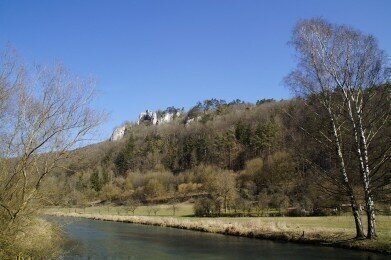Air Monitoring
How Is Black Carbon Monitored?
Sep 29 2022
Over the course of the last two decades or so, the scientific community has begun to regard black carbon as a potentially damaging substance with significant repercussions for both human and environmental health. Not only is it adept at warming ambient air and hastening the thaw of the polar icecaps, but it’s a chief constituent part in particulate matter (PM), widely regarded as one of the most dangerous contaminants from a human health perspective.
As awareness has grown over the potential problems caused by black carbon, the Western world has worked to impose strict legislation on the pollutant, including tighter regulations on stove emissions, more robust vehicle engine standards and a gradual phasing out of forms of energy generation such as coal. However, in order to measure the progress that initiatives such as these have, it’s necessary to implement a robust monitoring mechanism – which is exactly what the UK government have done.
The Black Carbon Network
Since the 1st September 2006, the Black Carbon research monitoring programme has collected data about concentrations of black carbon in the British atmosphere. However, interest in this contaminant far predates the network’s inception; indeed historical data on the subject stretches all the way back to the 1920s.
As a result, the modern incarnation of the network, which was streamlined in 2012, provides a database of black carbon concentrations across the last 100 years and far into the future. As such, it is expected to be capable of allowing scientists and policymakers to track fluctuations in black carbon levels over time, extrapolate cause-and-effect explanations for the changes, measure how effective mitigation efforts have been and make predictions about what may occur in the future.
Where are the monitoring sites?
After the 2012 update, the Black Carbon Network was stripped back to include 14 monitoring sites across the UK, which are located in the following areas:
- Auchencorth Moss (Scotland)
- Ballymena Ballykeel (Northern Ireland)
- Belfast Centre (Northern Ireland)
- Birmingham A4540 Roadside (England)
- Birmingham Ladywood (England)
- Cardiff Centre (Wales)
- Chilbolton Observatory (England)
- Detling (England)
- Glasgow High Street (Scotland)
- Glasgow Townhead (Scotland)
- Kilmakee Leisure Centre (Northern Ireland)
- London Marylebone Road (England)
- London N Kensington (England)
- Strabane 2 (Northern Ireland)
Through these 14 locations, the government hopes the network will encompass up-to-the-minute air quality information from a diverse array of sites around the country.
The Aethalometer effect
By definition, black carbon is measured in terms of the amount of UV light it absorbs, as opposed to the infrared or terrestrial radiation it absorbs. As such, a specific instrument has been developed to meet this need, known as an aethalometer. A filter sample is collected via the use of Teflon tape, which then receives a single pass transmission of light.
The attenuation of the light of the sample, alongside its area, flow and volume, are compared to a clean filter sample to arrive at the results. The aethalometers used by the Black Carbon Network run across seven different wavelengths, ranging from 370 nanometres to 950 nanometres. The smallest of these is capable of delivering information about the UV component of the sample, thus allowing it to be used as a tracer in solid fuels.
The Black Carbon Network was recently updated in November 2019, with all pre-existing Magee Aethalometer Model A22s being replaced by the advanced A33 Model. These models use different algorithms and frameworks to arrive at their results, and thus the new findings, although more accurate, cannot fairly be compared with the old ones.
Digital Edition
IET 34.2 March 2024
April 2024
Gas Detection - Biogas batch fermentation system for laboratory use with automatic gas analysis in real time Water/Wastewater - Upcycling sensors for sustainable nature management - Prist...
View all digital editions
Events
Apr 30 2024 Melbourne, Australia
Apr 30 2024 Birmingham, UK
May 03 2024 Seoul, South Korea
May 05 2024 Seville, Spain
May 06 2024 Minneapolis, MN, USA


















